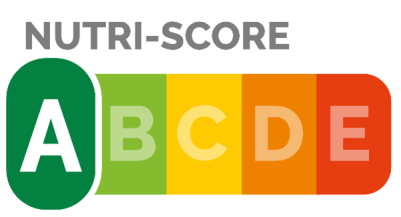The nutrition labeling system for food products - yes or no?

The European Commission is discussing the harmonization of the rules on the mandatory front-of-pack nutrition labeling (FOPNL) of food products. According to the declaration, the Commission wants to choose a FOPNL system to become mandatory in the EU by the end of 20221. These actions are part of the “Farm to Fork” strategy adopted by the EC on May 20, 2020. In the context of the choice of a FOPNL, the aim is to promote healthy eating behaviors among Europeans by facilitating the composition of a balanced diet. The long-term goal of using FOPNL is to significantly reduce the risk of non-communicable (diet-related) diseases in Europe, including diabetes, obesity, cancer and cardiovascular diseases. The EC’s actions in this respect are in line with the guidelines of the WHO which recommends the implementation of FOPNL as an important tool for shaping food policies.2 The WHO has already developed guidelines for good practice for the implementation of FOPNL. An important element of the practice would be to ensure continuous monitoring and periodic review of FOPNL in line with changing requirements, as well as transparency of the implementation process and universal access to the FOPNL system3.
A review published in 2020 by the Joint Research Center, commissioned by the Commission, lists 14 different FOPNL systems that are used in Europe and beyond4. One of the widespread marking systems is “Nutri-Score” which is also increasingly used in Poland. This code designation can be found mainly on products manufactured by large food concerns and on private label products of most retail chains. It is owned by the Agency for Public Health (Santé publique France) under the French Ministry of Health. The Agency implements the system and grants royalty-free licenses for its use. It declares that it monitors reliability and correctness of the use of the Nutri-Score mark as part of work of the scientific committee joining 7 countries supporting this label5. The Nutri-Score system has not yet been assessed for its compliance with the recommendations of the European Food Safety Authority (EFSA) published in April 2022 by a panel of experts6.

Nutri-Score – theory and practice
The Nutri-Score mark, as a rule, is intended to help consumers choose healthier products marked in green and identified with letters A and B. At the same time, it is supposed to draw attention to products containing ingredients such as sugar, sodium or fatty acids, which should be consumed in smaller quantities or even eliminated. According to the system, they are marked with colors from orange to red and letters from C to E. Although this type of label is intended to promote good eating habits by indicating which products feature high nutritional value, this objective is actually not met.
The scientific and medical community (involved in the epidemiology of diet-related diseases) is particularly concerned about the fact that an increasing number of ultra-processed products are marked in green (categories A and B) and are marketed. Marking in this way products which are known to have an adverse effect on the human body, is completely contrary to the idea of introducing FOPNL. This is also inconsistent with current knowledge about adverse effects of excessive consumption of ultra-processed foods in the context of an increased risk of developing cancer and other non-communicable diseases7. It should be noted that the relationship between the consumption of this type of food and the risk of cancer has also been shown by the researchers who are the authors of the Nutri-Score system8. The observed practice of marking some ultra-processed products with green categories A or B within the Nutri-Score system is therefore inconsistent with the declarations of the designers of this system in the field of promoting pro-health behaviors that in the perspective of the coming years would reduce the incidence of, for example, cancer9.
Nutri-Score under the magnifying glass of scientists from the Faculty of Health Sciences of the Medical University of Warsaw
Due to numerous controversies regarding the reliability of the Nutri-Score label, a scientific team from the Faculty of Health Sciences, bringing together researchers from the Department of Education and Research in Health Sciences: Assoc. Prof. Mariusz Panczyk and Assoc. Prof. Mariusz Jaworski, PhD and from the Department of Human Nutrition: Assoc. Prof. Iwona Traczyk, PhD, Beata Sińska, PhD and Alicja Kucharska, PhD, prepared an expert report on FOPNL systems10.
Specialists from the Polish Society of Dietetics, the Polish Society of Nutritional Sciences, the Committee on Human Nutrition Science of the Polish Academy of Sciences as well as lecturers and scientists from major universities and research institutions in the country were invited to participate in the study. A total of 75 experts in nutrition and dietetics. The results of the panel with their participation are clear: the idea of FOPNL is a good solution for shaping positive consumer behaviors, but the Nutri-Score system raises objections.
The experts’ comments concern, firstly, the methodology and algorithm for profiling food products to be marked with this system. In their opinion, one of the serious drawbacks of this system is the lack of inclusion of the degree of product processing in the Nutri-Score algorithm. It is estimated that between 26% and 52% of highly processed products are in the green categories11. This significant imperfection of the marking system may contribute to improper profiling of products, which can currently be observed on Polish store shelves. So, we can find, on the one hand, natural products marked with the letter D or E and ultra-processed products marked with the letter A or B. From the perspective of promoting healthy behaviors, and in particular from the point of view of primary prevention of cancer or cardiovascular diseases, it can be assumed that the Nutri-Score system will not support proper food choices and will not contribute in the long run to reducing the risk of these diseases in Polish society.
The above-mentioned report of Polish experts also indicates a wider problem related to the use and implementation of the Nutri-Score system in Poland. Attention is drawn primarily to the statement of experts that the Nutri-Score system may not meet current nutritional recommendations and may not fully comply with the recommendations of healthy eating. Thus, it can contribute to serious public health losses, which are extremely difficult to remedy in the future.
Here are only a few of the most important findings from this report:
- every fourth (24%) of the nutrition experts has rejected Nutri-Score as a mandatory product labeling system in Poland;
- 75% of the scientists have concluded that Nutri-Score does not take into account the full nutritional value of products, including bioactive compounds crucial for health-promoting properties;
- 80% of the surveyed experts are of the opinion that Nutri-Score does not guarantee that the consumer’s choice of only products with the highest rating (A or B) will allow to compose a balanced diet;
- 59% of the specialists strongly support modification of this system and 24% have rejected it altogether.
The above-mentioned conclusions from the experts’ report are consistent with the observed practice of some manufacturers and retail chains in the use of the Nutri-Score mark, which:
- promotes reformulation. the aim of which is not to provide products with a better composition (for example, with a high content of vitamins, minerals or phytocompounds important for health) but to obtain a recipe that will allow – as part of the Nutri-Score algorithm – to obtain a better (i.e. green, with letters A or B) category in the classification;
- does not distinguish between products with different degrees of processing and, what is more, in a way, it promotes highly processed products with a long list of ingredients added in the production process that do not occur naturally in them;
- may mislead the consumer due to the fact that it refers only to 100 g of the solid product or 100 ml of the beverage and not to the size of the typical portion consumed.
Below are some examples of products the “green” marking of which (letters A or B in the Nutri-Score system) raises serious objections from the point of view of prevention of diet-related diseases:
- chocolate breakfast cereals;
- “light” carbonated (energy) drinks;
- frozen pizza.
However, among the products marked in red (letters D and E), which according to Nutri-Score should be limited or avoided, there are, for example:
- smoked cottage cheese;
- green pesto;
- Atlantic salmon.
What will come next for Nutri-Score in Poland? Conclusions from the study of scientists from the Medical University of Warsaw
In Poland, the Nutri-Score system is being implemented on the basis of voluntary marking, but no legal steps have been taken in this respect. No action has been taken regarding the local validation of this system and its compliance with Polish dietary recommendations has not been assessed. The impacts of its implementation on both public health and on food production by domestic producers have not been assessed.
Importantly, there was been no broad debate on the implementation of FOPNL in Poland, which should involve representatives of the world of science, food producers and distributors, as well as consumers. Such a debate should precede the introduction of the FOPNL system in Poland, also if it is a voluntary designation. In light of the recent decision of the Italian Antitrust Office (AGCM) that the Nutri-Score system misleads consumers, particular caution should be exercised in this regard12. Also Romanian senators have rejected a proposal to introduce voluntary Nutri-Score labeling in Romania in June this year13.
Hasty introduction of the labeling, the reliability of which is questioned, can cause serious damage to public health and undermine trust in public institutions. Potential losses due to this will be difficult to remedy in the future, and replacing a defective system with its modification or other marking will be extremely difficult to achieve. The experts’ reservations expressed in the report of researchers from the Faculty of Health Sciences regarding reliability of Nutri-Score labels placed on the packaging of commercially traded products should be an important argument for public institutions to undertake monitoring of the implementation of this system in Poland.
- https://www.europarl.europa.eu/legislative-train/theme-a-european-green…;
- https://www.who.int/news/item/27-09-2021-state-of-play-of-who-guidance-…;
- https://www.who.int/publications/m/item/guidingprinciples-labelling-pro…;
- Storcksdieck Genannt Bonsmann, S., Marandola, G., Ciriolo, E., Van Bavel, R. and Wollgast, J., Front-of-pack nutrition labelling schemes: a comprehensive review, Publications Office of the European Union, Luxembourg, 2020, ISBN 978-92-76-08970-4, doi:10.2760/180167
- https://www.santepubliquefrance.fr/en/nutri-score
- https://www.efsa.europa.eu/en/efsajournal/pub/7259
- Lane MM, Davis JA, Beattie S, Gómez-Donoso C, Loughman A, O'Neil A, Jacka F, Berk M, Page R, Marx W, Rocks T. Ultraprocessed food and chronic noncommunicable diseases: A systematic review and meta-analysis of 43 observational studies. Obes Rev. 2021 Mar;22(3):e13146. doi: 10.1111/obr.13146
- Fiolet T, Srour B, Sellem L, Kesse-Guyot E, Allès B, Méjean C, Deschasaux M, Fassier P, Latino-Martel P, Beslay M, Hercberg S, Lavalette C, Monteiro CA, Julia C, Touvier M. Consumption of ultra-processed foods and cancer risk: results from NutriNet-Santé prospective cohort. BMJ. 2018 Feb 14;360:k322. doi: 10.1136/bmj.k322.
- Deschasaux M, et al. Nutritional quality of food as represented by the FSAm-NPS nutrient profiling system underlying the Nutri-Score label and cancer risk in Europe: Results from the EPIC prospective cohort study. PLoS Med. 2018 Sep 18;15(9):e1002651. doi: 10.1371/journal.pmed.1002651.
- Full version of the report: https://www.wum.edu.pl/node/17368
- Romero Ferreiro C, Lora Pablos D, Gómez de la Cámara A. Two Dimensions of Nutritional Value: Nutri-Score and NOVA. Nutrients. 2021 Aug 13;13(8):2783. doi: 10.3390/nu13082783.
- https://www.agcm.it/media/comunicati-stampa/2021/11/PS12131-PS12183-PS1…;
- https://www.ordinea.ro/video-proiect-pentru-sanatatea-romanilor-usr-pro…;